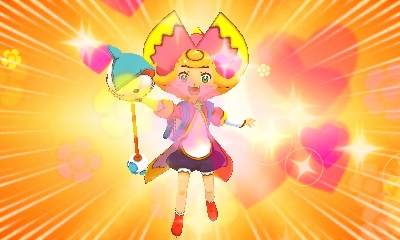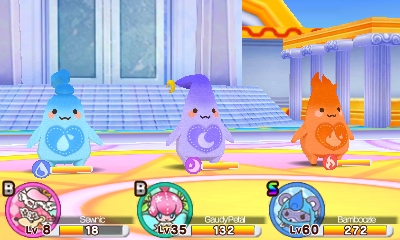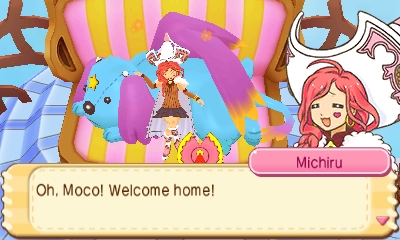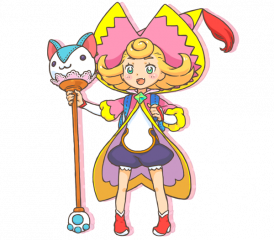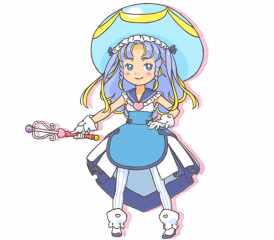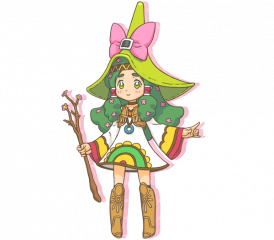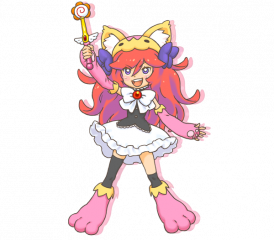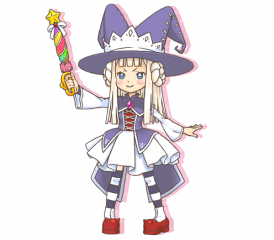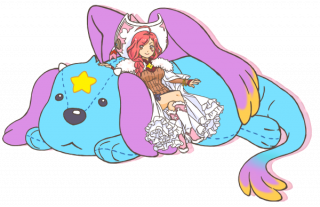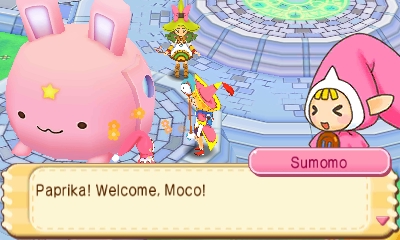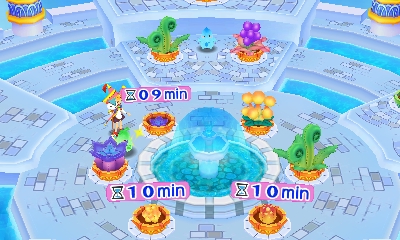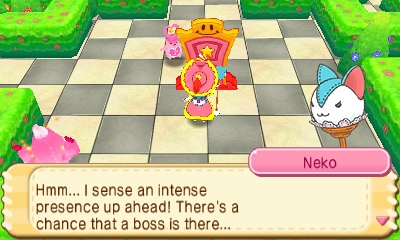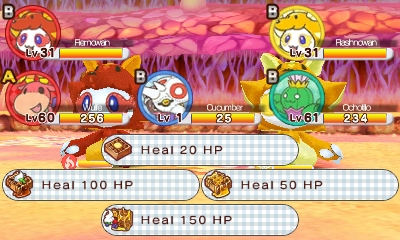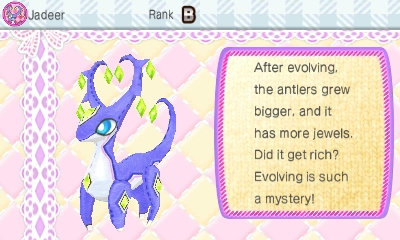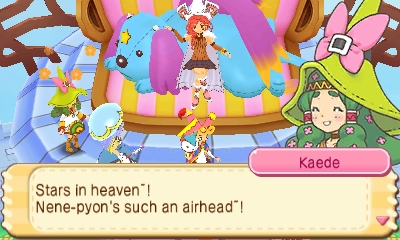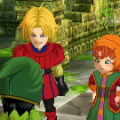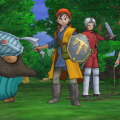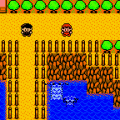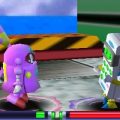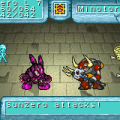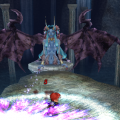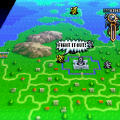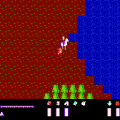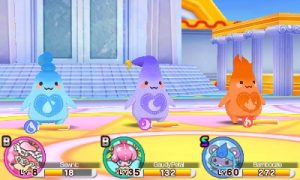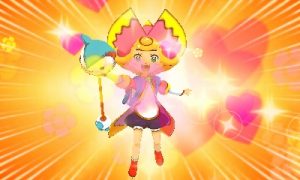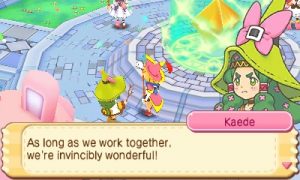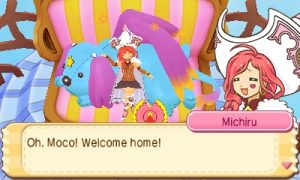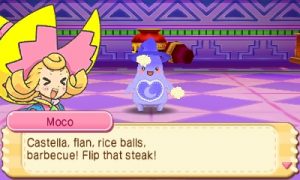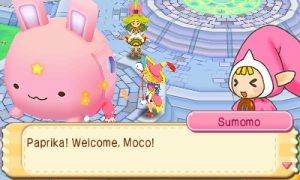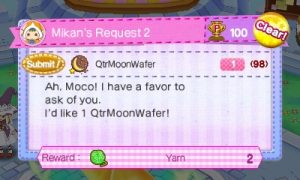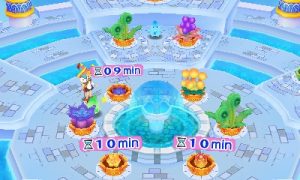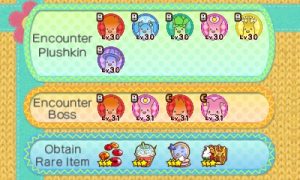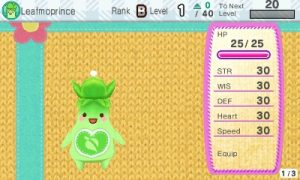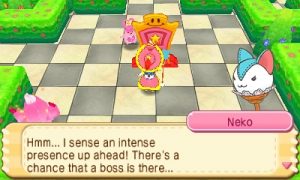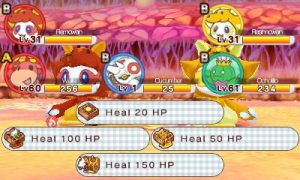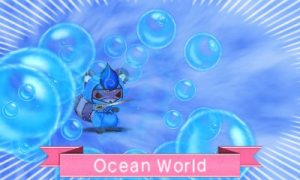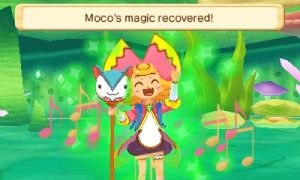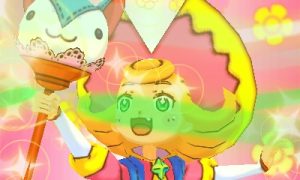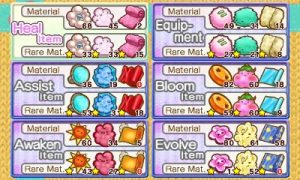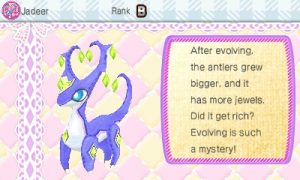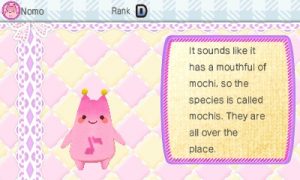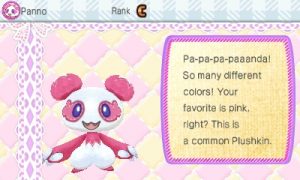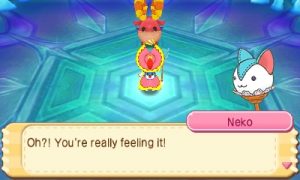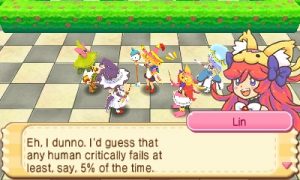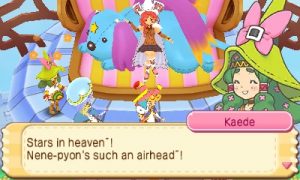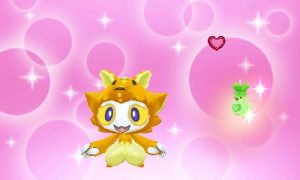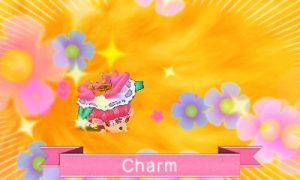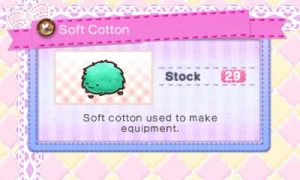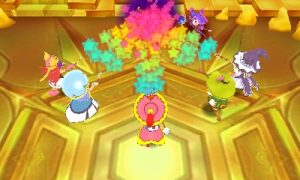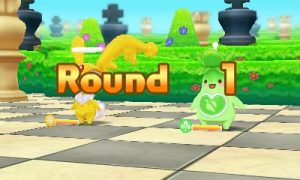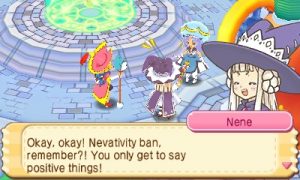Moco Moco Friends is a strange game. Sitting on the shelves of North American game stores, it’s a shade of pink that seems anathema to the average gamer’s tastes and desires. It’s the kind of pink that screams, “this is a game made exclusively for your little sister,” but it lacks a familiar tie-in like Barbie or My Little Pony that might actually entice clueless parents to pick it up for their daughters. Judging from the adorable Japaneseness of it all, it seems the only reason it’s available in English at all is because Aksys, the localizers, figured there were enough moé-loving Ameri-otaku out there to turn a buck from it. Though Aksys doesn’t appear to have been TOO worried about a little thing like “making money” from the game; before it even launched, they announced they would be donating a portion of the profits from the game to the Make-a-Wish Foundation.
But regardless of who Aksys thought would be buying it, this is clearly a game targeted squarely at girls with their age in the single digits. It’s a pastel-colored, frilly, magical-girl-filled game with pared-down mechanics set in a world of sprites, fairies, and living plush toys called Plushkins, wherein friendship is the greatest power of all. It’s also a JRPG.
And then it hits you that the worlds of RPGs and little girls really don’t intersect all that often. Games targeted at little girls are a rarity but do happen—though they’re usually minigame-fests or virtual pets, and they’re very often licensed. And certainly there are games, RPGs included, that are aimed at children (or “family” audiences) and happen to sweep little girls up into them, such as Pokémon. But a proper turn-based RPG courting little girls is absolutely an oddity. Moreso in the Americas, where console gaming (even portable console gaming) is seen as much more of a “young male” thing. Games like Moco Moco Friends just don’t happen. And yet it did, and somehow it got brought to the West.
The star of Moco Moco Friends is the titular Moco, a young witch who has recently graduated magic school and is ready to begin her apprenticeship. Barely graduated—Moco is a bubblehead of Ralph Wiggumian proportions, who believes every unfamiliar thing she encounters to be a kind of food and who has a talent for falling asleep standing up. Yet she’s managed to score an apprenticeship with an extremely famous and powerful witch named Michiru, because Moco is absolutely adored by the living plush toys called Plushkins that populate her world. Witches must form magical contracts with these creatures, and Moco can befriend anything. And when the watchful eye of Michiru is off her, she has a living, talking, sassing cat-head staff named Neko to keep her in line during her ditzier moments (so, 90% of the time). With several of her friends from magic school at her side, it seems like Moco’s first year of witchdom will go off without a hitch. But that wouldn’t be very interesting, now would it?
You see, their happy-go-lucky world is plagued by a dark force known as Tormentropy, which is made up of all the negative feelings people harbor deep within themselves. Tormentropy is filling the world at an alarming rate, and if it keeps up, no one will be happy again. It’s up to Moco and her loyal band of school-anime stereotypes to befriend Plushkins, traverse simplistic dungeons, and keep the world safe from Tormentropy once and for all.
Characters
Moco
The heroine of the game. Her name means “fluffy,” and she’s about as sharp as said fluff. She’s incredibly warmhearted, however. Her staff can talk and is named Neko.
Shizuku
A shy rich girl who uses her Plushkins to help her break out of her shell.
Kaede
A young hippie-in-the-making who enjoys singing aloofly and bonding with nature.
Lin
A fiery young witch who is always the first in the fray.
Nene
A grumpy young witch explicitly referred to as “tsundere” in the English translation.
Michiru
A witch known as the Charisma Master, a powerful figure all others look up to. She takes Moco (and eventually all her classmates) under her wing.
Moco Moco Friends is a dungeon-crawling RPG cut down to its bare fundamentals in an attempt to make it easy to digest for the younger crowd. The hub town is composed of just two screens: A central plaza containing all of the shops and utilities necessary for the game, right down to a handful of NPCs who dispense randomly generated sidequests, and a garden off to the side where items can be grown in real time. The dungeons themselves are equally barebones affairs. While there are a wide range of dungeon areas to visit, several of which are optional, they differ only in appearance, items, and enemies. Each dungeon consists of two simple, mazelike floors and a boss. No obstacles, no puzzles, just occasional treasure chests and item gathering spots. Only the final dungeon mixes it up at all, and it has a whopping three mazelike floors before it throws you at the final boss.
The real meat and potatoes of the game, then, is the combat. In another stab at kid-friendliness, this is a monster-raising RPG, where the adorable Plushkin creatures do the fighting for you. Each Plushkin is affiliated with one of the game’s six elements, and while different Plushkins do have different “builds,” falling into roles like “magical attacker” and “tank,” the game shies away from giving its creatures dramatic statistical peaks and valleys. Several species even have exactly even stats in every single category. This means that children can freely assemble teams of the creatures they think look the cutest without worrying too much about statistics.
Plushkin battles are 3-on-3 turn-based affairs, and each Plushkin has four moves available to it: a simple attack, and three spells, which can be changed out as the Plushkin levels up and evolves. The spell list in the game is as back-to-basics as an RPG spell list can get, and consists of six elemental attack spells for each element, a handful of healing spells, and a smattering of support effects that almost always hit the entire battlefield at once. Spells are cast from an MP pool shared by the whole party, which refills a little every turn but which also has a strict maximum amount. And every now and then, Moco will go into “Moco Fever” mode, which allows you to spend unlimited MP that turn.
Other RPGs targeted at beginners, such as Final Fantasy Mystic Quest, have generally favored easier battles; despite the simplicity of its system, Moco Moco Friends has surprisingly sharp teeth. The strictly limited amount of MP available means the player can’t just spam their strongest attacks every single turn, which makes support skills much more viable in the game’s regular battles. Bosses very frequently include healers and even Plushkins who can resurrect their fallen teammates, and the medics will happily draw out fights unless the player hones in on them. It actually does a bang-up job of teaching young players the basics of RPG strategy and requires them to make meaningful choices to progress, and it does so by cutting back on information overload instead of difficulty. Of course, the penalty for failure is nothing more harsh than being sent back to town, and players are free to leave dungeons at any time if they feel overwhelmed.
Unfortunately, not all the game’s simplified systems work so smoothly. Item crafting, for example, requires a mere three items to make any item in the game… but what items you craft are entirely random. This turns getting certain items into an exercise in luck and tedium. To make matters worse, some items are vital for strengthening your Plushkins, and the only way to get these is through crafting. Forcing players to grind for rare items is hardly outside the norm for RPGs, but it feels so much more egregious here due to the fact that you already have to expend resources to do it. It’s easily the game’s biggest misstep, both in terms of catering to new players and game design in general, and is quite a shame given that its gameplay is otherwise—well, kinda unremarkable, but unremarkable in an agreeable way.
But if that’s the worst Moco Moco Friends has to offer, then its aesthetics are easily its best. The overwhelming amounts of pink on display might not strike a chord with non-otaku adults, but it’s a slam-dunk as far as the target audience is concerned. This is a game full of bright, popping colors and soft, rounded edges, making the whole world look huggable. While the dungeons may not offer anything special gameplay-wise, they do offer a pleasing array of vistas to look at. The character models are very smooth, and it’s a pity they’re often so far from the camera, as the 3DS’s limited resolution obscures how nice and detailed they are. The game’s 3D effects are very clean as well, which is not something every third-party 3DS game gets right.
The Plushkins themselves are the star attraction, and the fact that they’re living plush toys isn’t just, if you’ll pardon the expression, fluff. Stitching runs along their sides. Their limbs are held in place with giant buttons. Some of them have beads or baubles hanging off of them. Stuffing even pops out of them when they take damage in battle. This means that even those Plushkins that follow familiar design templates like birds and dragons have a unique feel. There are also some delightfully creative original concepts here, like a deer with jewels hanging from its antlers and a froglet wearing a scary mask to make it look more grown-up. But then the specter of oversimplification raises its head again: while the individual designs are good, the game is drowning in palette swaps. Half the fun of monster-raising games is assembling a team of wildly different creatures, and the fact that so many monsters are so similar cuts greatly into your options.
The music, at least, is high-quality throughout. It’s just as aggressively cheerful as you would expect given the game’s overall cuteness, and also just as aggressively catchy. Even its moodier tunes, used for the slightly spookier-feeling “ancient ruins” dungeons and story events, never quite lose the upbeat skip in their step.
And there’s quite a lot of story events, too; Moco and her friends spend an awful lot of time chatting with one another in cutscenes despite the lightness of the game’s plot. Mostly these cutscenes exist as an excuse for magical girl shenanigans. But as the story draws to a close, the game takes a surprisingly somber tone as it ruminates on the nature of sadness and anger. The eventual conclusion the protagonist comes to is that people should be allowed to be sad and angry, and that it’s as cruel to force a sad person to be happy as it is to try and make a happy person sad. Many works aimed at children have morals about how it’s okay to feel sad sometimes, but Moco Moco Friends is one of the rare few to argue that sadness is a right others shouldn’t try to take from you. It’s a surprisingly thoughtful message coming from a game so unrelentingly chipper.
But the game’s translation, on the other hand…
It is perhaps true that, in the Americas, Moco Moco Friends was never going to find its audience. It is also perhaps true that Aksys might not have wanted to blow their translation budget on a super-niche title. But this game received a sarcastic, overly jokey localization that feels incredibly mismatched. It uses the phrase “this sucks” a lot, which gives you a pretty good idea of the tone it takes. It’s also stuffed full of “anime fan Japanese” tough to understand for anyone who isn’t an otaku—right up to the game’s bubbly, untranslated voice clips. The translation never says or does anything to push the game past an E rating, of course, but it’s clear the script was “spiced up” a bit for the grown-ups who Aksys figured would actually buy the game.
For an adult gamer, Moco Moco Friends doesn’t have much to offer. It has simple gameplay, and while it isn’t exactly a cakewalk, it also isn’t particularly difficult. It has magical girls and obscene amounts of cuteness, and the English version is for the kind of person who can be satisfied with that alone. But Moco Moco Friends wasn’t made for adults. It was made for little girls who are curious about video games and who want to have a game to play of their own. And if nothing else, Moco Moco Friends deserves praise for treating its target audience with respect. It is a “real” game with strategy, challenge, and longevity; care was put into its visual design, graphics, and soundtrack. It tries to craft a world and characters and a story little girls are going to care about. In a world where games for girls are so often based on licensed properties, it tries to be its own unique thing. And it is. For as simple and run-of-the-mill as its gameplay is, there’s still little else quite like Moco Moco Friends.
